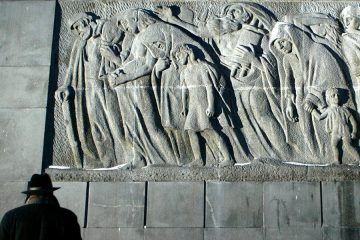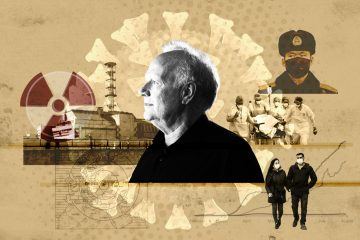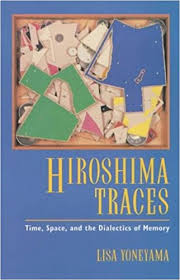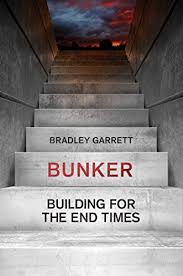https://www.youtube.com/watch?v=Jgj6jScPWK8
https://www.youtube.com/watch?v=Jgj6jScPWK8
Eva Botkin-Kowacki in The Christian Science Monitor:
 To some witnesses, it simply didn’t make sense. “This is really an irrational phenomenon,” wrote the Polish historian Emanuel Ringelblum, in notes found after his execution by the Gestapo. “There’s no explaining it rationally.” It was November 1941 in the Warsaw Ghetto, the sliver of Poland’s capital that the Nazi occupying government had transformed into a squalid holding pen for the area’s Jews, Romani, and others deemed undesirable. Typhus had raged through the community all through the summer and early autumn. But then, just as infection rates were expected to have skyrocketed as winter approached, cases fell dramatically. “I heard this from the apothecaries, and the same thing from doctors and the hospital,” Ringelblum wrote that month. “The epidemic rate has fallen some 40 per cent.”
To some witnesses, it simply didn’t make sense. “This is really an irrational phenomenon,” wrote the Polish historian Emanuel Ringelblum, in notes found after his execution by the Gestapo. “There’s no explaining it rationally.” It was November 1941 in the Warsaw Ghetto, the sliver of Poland’s capital that the Nazi occupying government had transformed into a squalid holding pen for the area’s Jews, Romani, and others deemed undesirable. Typhus had raged through the community all through the summer and early autumn. But then, just as infection rates were expected to have skyrocketed as winter approached, cases fell dramatically. “I heard this from the apothecaries, and the same thing from doctors and the hospital,” Ringelblum wrote that month. “The epidemic rate has fallen some 40 per cent.”
The Warsaw Ghetto should have been an optimal site for an outbreak. More than 450,000 mostly Jewish inmates were crammed into 1.3 square miles, making for a population density between 5 and 10 times that of today’s busiest cities. Nazi authorities deliberately kept resources from entering the area, all the while using fear of disease in anti-Semitic party propaganda. Nevertheless, typhus rates in the Warsaw Ghetto were plummeting.
The only explanation, according to research published today in the journal Science Advances, is that the inmates did it themselves, by sheltering in place, promoting and enforcing hygiene, and practicing social distancing. This remarkable story of an oppressed community rallying together to combat a public health crisis holds obvious implications for today, as the novel coronavirus pandemic continues to claim thousands of lives around the world daily and debilitate national economies. “It’s one of the great medical stories of all time,” says Howard Markel, the University of Michigan physician and medical historian who coined the term “flatten the curve” in relation to COVID-19. “We should take heart and inspiration from the courage, bravery, and unity of doctors, nurses, and patients alike to combat an infectious foe. We need to do that today, and they did it under much more dire circumstances.”
More here.
Laura Marris in The New York Times:
 “The Plague” did not come easily to Camus. He wrote it in Oran, during World War II, when he was living in an apartment borrowed from in-laws he disliked, and then in wartime France, tubercular and alone, separated from his wife after missing the last boat back to Algeria. Unlike the shorter, harsher sentences of “The Stranger,” which Sartre quipped could have been titled “Translated From Silence,” the sentences of “The Plague” bear witness to the tension and monotony of illness and quarantine: They stretch their lengths to match the pull of anxious waiting. By the time the book was published in 1947, writers were looking for a way to bear witness as well to the Nazi occupation of France, and “The Plague” was championed as the novel of the occupation and the Resistance. For Camus, illness was both his lived experience and a metaphor for war, the creep of fascism, the horror of Vichy France collaborating in mass murder.
“The Plague” did not come easily to Camus. He wrote it in Oran, during World War II, when he was living in an apartment borrowed from in-laws he disliked, and then in wartime France, tubercular and alone, separated from his wife after missing the last boat back to Algeria. Unlike the shorter, harsher sentences of “The Stranger,” which Sartre quipped could have been titled “Translated From Silence,” the sentences of “The Plague” bear witness to the tension and monotony of illness and quarantine: They stretch their lengths to match the pull of anxious waiting. By the time the book was published in 1947, writers were looking for a way to bear witness as well to the Nazi occupation of France, and “The Plague” was championed as the novel of the occupation and the Resistance. For Camus, illness was both his lived experience and a metaphor for war, the creep of fascism, the horror of Vichy France collaborating in mass murder.
But unlike many of his contemporaries, Camus took the long view. The heroism of the Resistance was less important to him than how humanity could be restored after the war. In his speech “The Human Crisis,” delivered at Columbia University in 1946, he pushed for a postwar return to the human scale, calling hatred and indifference “symptoms” of this crisis. He refused to let his country off the hook for its role in spreading this illness: “And it’s too easy, on this point, simply to accuse Hitler and say that the snake has been destroyed, the venom gone. Because we know perfectly well that the venom is not gone, that each of us carries it in our own hearts.”
While he knew that people carried traces of hatred, he was also hoping those traces could be disarmed as cultural antibodies. In this same speech, he called for creating “communities of thought outside parties and governments to launch a dialogue across national boundaries; the members of these communities will affirm by their lives and their words that this world must cease to be the world of police, soldiers and money, and become the world of men and women, of fruitful work and thoughtful play.”
More here.
Almost all the statuaries were killers
if on horseback, add ten thousand
to the toll. And sword-bearers?
Notch another zero. We think
we worship life, but we have
made a botch of this, encircling
ponds and trees with the smelt
of disused weapons, planting flowers
around the ankles of killers,
even the birds know not to use them
as lighthouses. Death
is our archangel, our leaders
bronze themselves in advance—
even a dog can’t trot through the palace
halls these days without looking over
its shoulder.
by John Freeman
from The Park
Copper Canyon Press, 2020
 Servaas Storm over at INET (with comments by Joseph Halevi and Peter Kriesler, Duncan Foley, and Thomas Ferguson here):
Servaas Storm over at INET (with comments by Joseph Halevi and Peter Kriesler, Duncan Foley, and Thomas Ferguson here):
Questions about the decline of Social democracy continue to excite wide interest, even in the era of Covid-19. This paper takes a fresh look at topic. It argues that social democratic politics faces a fundamental dilemma: short-term practical relevance requires it to accept, at least partly, the very socio-economic conditions which it purports to change in the longer run. Bhaduri’s (1993) essay which analyzes social democracy’s attempts to navigate this dilemma by means of ‘a nationalization of consumption’ and Keynesian demand management, was written before the rise of New (‘Third Way’) Labor and before the Great Financial Crisis of 2007-8. This paper provides an update, arguing that New Labor’s attempt to rescue ‘welfare capitalism’ entailed a new solution to the dilemma facing social democracy based on an expansion of employment, i.e. an all-out emphasis on “jobs, jobs, jobs”. The flip-side (or social cost) of the emphasis on job growth has been a stagnation of productivity growth—which, in turn, has put the ‘welfare state’ under increasing pressure of fiscal austerity. The popular discontent and rise of ‘populist’ political parties is closely related to the failure of New Labor to navigate social democracy’s dilemma.
More here.
 Adam Tooze in Foreign Policy:
Adam Tooze in Foreign Policy:
We all know the Chernobyl script. A badly designed reactor suffered a meltdown. The decrepit Soviet regime tried to hide the disaster. Millions of citizens were put at risk. And the truth came out. The regime paid the price. Its legitimacy was in tatters. Collapse followed.
For liberals it is a pleasing morality tale. Dictatorship fails when faced with the challenges of modernity. Sunlight is the best disinfectant.
When COVID-19 struck, we wondered whether it might be Chinese President Xi Jinping’s Chernobyl. But after initial prevarication driven by Wuhan’s local politics, China’s national leadership reasserted its grip. The worst moment was Feb. 7, when hundreds of millions of Chinese took to the Internet to protest the treatment of whistleblowing doctor Li Wenliang, who had died of the disease. Since then Beijing has taken control, both of the disease and the media narrative. Far from being a perestroika moment, the noose of party discipline and censorship has tightened.
By the spring it was White House staffers who were likely watching the HBO miniseries Chernobyl and wondering about their own boss. Lately, the historian Harold James has asked whether the United States is living through its late-Soviet moment, with COVID-19 as President Donald Trump’s terminal crisis. But if that turns out to be the case, it will not be because of a botched cover-up; Americans are living neither in late-Soviet Ukraine nor in the era of Watergate, when a sordid exposé could sink a president. Of course, Trump was culpably irresponsible in making light of the disease. But he did so in the full glare of TV cameras. The president reveled in flouting the recommendations of eggheaded public health experts, correctly calculating that a large swath of his base was not concerned with conventional norms of truth or reason.
More here.
 Andrew Whitehead in The Wire:
Andrew Whitehead in The Wire:
‘Hindu Lady Chaired’, ran the headline in the Cambria Daily Leader. The event was the Eisteddfod, a festival of Welsh literature and culture, at the University College of Wales at Aberystwyth in February 1914. A 19-year-old Indian student caused a sensation when she was awarded the top prize, the bardic chair.
All the entries in the contest – on the prescribed topic of Owain Lawgoch, a 14th-century Welsh patriot – were submitted under pseudonyms. The Leader recorded on its front page the ‘remarkable’ scene when the author of the winning verse stepped forward:
“The highest place was awarded to “Shita”, for an ode written in English, and described as an excellent and highly dramatic treatment of the subject. … Miss [Dorothy] Bonarjee received a deafening ovation when she stood up and revealed herself as “Shita”. … The “chairing” ceremony then proceeded amidst great enthusiasm.”
The ripples from this unparalleled success reached as far as India’s national newspapers.
“The examiners are required to give preference to Welsh odes, and it is rare for one written in the English tongue to secure the award’, the Calcutta-based Statesman reported. ‘This is understood to be the first occasion of the competition being won by a non-European, or by a member of the fair sex.”
 Astra Taylor talks to Rutgers faculty union president Todd Wolfson, over at Boston Review:
Astra Taylor talks to Rutgers faculty union president Todd Wolfson, over at Boston Review:
Astra Taylor: Higher education seems to be in a perpetual state of crisis. What are your general thoughts on the crisis? And how did that set the stage for the devastation that the pandemic has brought to higher education?
Todd Wolfson: Rutgers, and higher education writ large, has been hit quite profoundly by the pandemic. Campuses swiftly shuttered in March. Students living in dorms were asked to pack up and leave; faculty teaching classes were asked to rapidly shift those classes online; staff across the university were asked to work remotely. Since then, faculty, students, staff and administrators have been trying to navigate a growing crisis. Many campuses will be entirely online in the fall, and students and parents are questioning the effectiveness of that approach. Meanwhile staff, faculty, and graduate students who make our colleges and universities work are facing increasing precarity. Many have either lost their jobs or been furloughed.
While the pandemic has had a particularly adverse impact on higher education, we’ve come to this critical moment because of the history that precedes it: the long-term trend of disinvestment in higher education.
More here.
 The Immanent Frame has a forum on Olivier Roy’s Is Europe Christian?, with comments from John R. Bowen, Agnès Desmazières, Nadia Fadil, Effie Fokas and Erin K. Wilson. Olivier Roy:
The Immanent Frame has a forum on Olivier Roy’s Is Europe Christian?, with comments from John R. Bowen, Agnès Desmazières, Nadia Fadil, Effie Fokas and Erin K. Wilson. Olivier Roy:
In the course of my research on the rooting of Islam in Europe, I studied the polemics that engulfed Europe and gave birth to a whole array of anti-migrant populist parties. This rooting was a consequence of a massive labor migration dating from the 1960s and the coming of age of second and even third generations of young Muslims who consider themselves Europeans. The populists as well as many rightist leaders first opposed a “Christian Europe” to a foreign religion. The polemic could be summed up in a single question: “Is Islam compatible with European values?” But logically such a question entailed another question: “What are European values?” It clearly appeared that most of the values that people contrast to Islam (feminism, gay rights, right to blasphemy) are at best not supported and at worst condemned by the Catholic Church and Protestant evangelicals in Europe. Of course, most of the established Protestant churches are far more liberal, but precisely because of this liberalism they are more open to accept Muslims. That is the paradox of Europe compared to the United States: US evangelicals who defend a Christian America advance Christian values and norms (against abortion, same sex marriage, etc.), while in Western Europe, at least, most of the populists endorse (and practice) liberal values in terms of family and sexual life. How do we explain this chiasm? How do Christian faith communities react to it? Why does the Catholic Church define European culture as having turned “pagan,” while many people who do not engage in any Christian religious practice still refer positively to a “Christian Europe”?
Most of the academic literature on the topic could be divided into two schools. One stresses the importance of the Enlightenment as a tool of secularization, leading to a more open, free, and hence modern society (this school consequently thinks that the problem of Islam is the absence of the “Enlightenment” moment). The other school stresses the translation of Christian norms and values into European secular culture (for instance, the importance of individualism or the sacralization of the state). For the second school, the problem of Islam is that it is not Christianity.
More here.
Jonathan Miles at the New York Times:
 Hot Springs, as David Hill writes in “The Vapors,” a history of the town during its sin-soaked heyday, let a lot of people be — with varying degrees of vengeance. Among them were workaday gamblers and good-timers like Kelley, but also bookmakers, con artists, prostitutes, shills, crooked auctioneers, outlandishly corrupt politicians and boldface-named mobsters. From about 1870 until 1967, when the reformist governor Winthrop Rockefeller shut off the vice spigot, the town’s chief municipal expression was a wink. The mayors winked. The cops winked. The preachers winked, or at least averted their gaze. Winking was how a Bible Belt town of 28,000 (circa 1960) attracted upward of five million visitors per year and why, as Hill writes, on any given Saturday night, there may have been “no more exhilarating place to be in the entire country.”
Hot Springs, as David Hill writes in “The Vapors,” a history of the town during its sin-soaked heyday, let a lot of people be — with varying degrees of vengeance. Among them were workaday gamblers and good-timers like Kelley, but also bookmakers, con artists, prostitutes, shills, crooked auctioneers, outlandishly corrupt politicians and boldface-named mobsters. From about 1870 until 1967, when the reformist governor Winthrop Rockefeller shut off the vice spigot, the town’s chief municipal expression was a wink. The mayors winked. The cops winked. The preachers winked, or at least averted their gaze. Winking was how a Bible Belt town of 28,000 (circa 1960) attracted upward of five million visitors per year and why, as Hill writes, on any given Saturday night, there may have been “no more exhilarating place to be in the entire country.”
more here.
Jacques Hymans at the LRB:
 In her 1999 book Hiroshima Traces, the anthropologist Lisa Yoneyama describes the hibakusha’s intense relationship with the dead differently from Lifton’s ‘death in life’. Yoneyama sees the hibakusha as giving the bomb’s victims life after death. She writes that the hibakusha have developed ‘testimonial practices’ that can be compared to ‘a shamanistic ritual that summons dead souls’, to ‘resurrect the deceased and endow them with voices’.
In her 1999 book Hiroshima Traces, the anthropologist Lisa Yoneyama describes the hibakusha’s intense relationship with the dead differently from Lifton’s ‘death in life’. Yoneyama sees the hibakusha as giving the bomb’s victims life after death. She writes that the hibakusha have developed ‘testimonial practices’ that can be compared to ‘a shamanistic ritual that summons dead souls’, to ‘resurrect the deceased and endow them with voices’.
Beyond the Mushroom Cloud, a 2012 study by the ethicist Yuki Miyamoto, supports Yoneyama’s interpretation. The testimony of the hibakusha, Miyamoto writes, ‘draws strength from the dead to resist and unsettle the conditions of this world, replacing them with an evolving vision of a different world – a world bound not by the image of the mushroom cloud, but by a sympathy for others that knows no earthly bounds.’
more here.
One year people in the Valley of Kashmir
Kept away strangers in their backyards
who stole the luxury of silence turned
Valley into a strip of clamoring mouths
“azadi” “azadi” the words emit as gills
suck oxygen as the eyes of children
blinded by bullets see some light
even Trump’s visit could not bring down
the showman’s frenzy and now there is
temple he ritualizes but people in Valley
cannot go to mosques since some gods
are anointed and others are just new to
pantheon while holding chaplets they
are saints of curfew fringed by guns
without power and water extended
victims of an empire busy in charting
new territories from Bosnia to Babylon
an apostle unseen still far from this land
where wood is perfumed water pearly
skies embracing poetry oxymoronic.
Katie Mack in aeon:
 Space, as they say, is big. In The Hitchhiker’s Guide to the Galaxy (1979), Douglas Adams elaborates: ‘You may think it’s a long way down the road to the chemist, but that’s just peanuts to space.’ It’s hard to convey in everyday terms the enormity of the cosmos when most of us have trouble even visualising the size of the Earth, much less the galaxy, or the vast expanses of intergalactic space. We often talk in terms of light-years – the distance light can travel in a year – as though the speed of light is somehow more intuitive than a number written in the trillions of kilometres. We give benchmarks in the same terms (it takes light 1.3 seconds to travel between the Earth and the Moon) but, in our everyday experience, light is instantaneous. We might as well talk about the height of a building in terms of stacking up atoms.
Space, as they say, is big. In The Hitchhiker’s Guide to the Galaxy (1979), Douglas Adams elaborates: ‘You may think it’s a long way down the road to the chemist, but that’s just peanuts to space.’ It’s hard to convey in everyday terms the enormity of the cosmos when most of us have trouble even visualising the size of the Earth, much less the galaxy, or the vast expanses of intergalactic space. We often talk in terms of light-years – the distance light can travel in a year – as though the speed of light is somehow more intuitive than a number written in the trillions of kilometres. We give benchmarks in the same terms (it takes light 1.3 seconds to travel between the Earth and the Moon) but, in our everyday experience, light is instantaneous. We might as well talk about the height of a building in terms of stacking up atoms.
Maybe, if we’re feeling more adventurous, we use analogies based on personal experience. The distance to the Moon is 32 million school buses! If you could drive there in one of those school buses, going at 60 miles per hour, it would take you 166 days! I’m not sure that helps.
I wish I could say that astronomers have a better intuitive grasp of all this. We don’t. Brains don’t really work that way. So we cheat with numbers. We use longer yardsticks to talk about bigger spaces: kilometres, light-years, parsecs, kiloparsecs, megaparsecs, gigaparsecs. We get comfortable with exponents (1,000 is 103; 1 trillion is 1012) and think in logarithmic intervals, where each successive step is a new power of 10. At some point, distance stops being a straightforward concept entirely. Here in the Solar System, space and time are both more or less well-behaved, but when you have to deal with the cosmos as a whole, you have to factor in the fact that it refuses to sit still for its fitting.
Space is expanding. It has been since the Big Bang, and it’s not stopping any time soon. If you look at a galaxy far, far away, not only do you have to factor in that the image you’re looking at is old, you have to account for the fact that it’s no longer where it was when you saw it. Let’s say you see a supernova go off, in a galaxy a billion light-years away. Did the supernova just go off, or did it go off a billion years ago? You can say the latter, because the light has been travelling to us for a billion years, but since there was no way to observe it back then, what does saying that it went off in the past even mean? And that billion-light-year-distant galaxy – how far away is it, really? Maybe a billion years ago it was a billion light-years away, but the Universe has been expanding all that time, so now it must be much farther. Which distance do we use?
More here.
Richard Overy in TLS:

The nature of the dictatorship clearly mattered because on their own it is unlikely that the military and politicians in either country would have plunged into total war after the bruising experience of 1914–18. Hitler and Mussolini were both obsessed with the idea of living space for peoples whose culture and racial value deserved it; since “space” was actually already occupied by the 1930s, only war would secure more of it. On this crude rationale, both dictators succeeded in persuading or cajoling the broader military and political leadership to follow. In both countries, imperial visions and national resentments already existed. Ullrich makes the obvious but important point that Hitler was not an alien presence, somehow “outside Germany”, but sufficiently linked to a longer German history for his ambitions to be understood, even accepted. Much the same was true for Mussolini, whose imperial appetite was not an aberration, but a product of a long history of Italy trying to vie with the established imperialism of Britain and France.
Nevertheless, the dictators were the driving force. Gooch’s Mussolini is the dangerous adventurer, who dreamt of war far beyond Italy’s modest capability. The detailed military history shows the long arc of strategic ineptitude. The invasion of Ethiopia and involvement in the Spanish Civil War in the 1930s were costly and limited conflicts, whose outcome flattered Italian forces. In war against a major power, these limitations were shown up. Gooch does not follow the line that Italians are hopeless soldiers, but he does show that poor staff work, a fatal gap between the officer corps and the rank and file, profound resource constraints, and a dangerous lack of collaboration between the armed services all contributed to undermining what Italian forces, better led and more fully armed, might have achieved. The war against Greece was a classic example. Mussolini quite underestimated the valour and determination of the Greek armed forces, while invading across difficult terrain in late October, when no sensible commander would think of starting a major operation, made a difficult task virtually impossible. Italian forces were confused about the invasion and poorly led. Without German intervention, the Greeks, with British help, might have won, though Gooch does not explicitly say so. The war in the desert against British Commonwealth forces, whose own commanders showed almost as poor a grasp of operational realities, would have been quickly over without German help. By the time of the battles of El Alamein (1942) there were some improvements, but Gooch shows that within days the larger Italian component (too often left out of the standard Western accounts) had run out of ammunition, food and water and could no longer fight. Nothing perhaps captures the cloud-cuckoo land inhabited by Mussolini better than his response to defeat in North Africa, cited by Gooch: “In the summer we’ll retake the initiative with a great offensive push towards Algeria [and] Morocco and to reconquer Libya”. Perhaps unsurprisingly, Italian generals a few weeks later began to plot the arrest and overthrow of their wayward commander.
More here.
Emanuele Coccia in Fall Semester:
 As in a fairy tale, the cities, to defend themselves from an invisible yet powerful enemy, have disappeared: they have gone into exile. They have declared themselves banned, outlawed, and now they lie before us like inside an archaeological museum or a diorama.
As in a fairy tale, the cities, to defend themselves from an invisible yet powerful enemy, have disappeared: they have gone into exile. They have declared themselves banned, outlawed, and now they lie before us like inside an archaeological museum or a diorama.
From one day to the next the schools, cinemas, restaurants, bars, museums, and almost all the shops, parks, and streets have closed, deemed uninhabitable. Social life, public life, meetings, dinners, lunches, work moments, religious rituals, sex, everything that opened once we closed the doors of our house became impossible. They survive only as a memory or as something that has to be constructed through complex and sometimes painful efforts: the calls, the direct GIS (geographic information system), the applause or the singing on the balcony. They all sound like mourning. We are mourning the disappeared city, the suspended community, the closed society along with the shops, the universities, the stadiums.
More here.
Will Wiles at Literary Review:
 But the word ‘bunker’ also has the scent of modernity about it. As Bradley Garrett explains in his book, it was a corollary of the rise of air power, as a result of which the battlefield became three-dimensional. With the enemy above and equipped with high explosives, you had to dig down and protect yourself with metres of concrete. Garrett’s previous book, Explore Everything, was a fascinating insider’s look at illicit ‘urban exploration’, and he kicks off Bunker with an account of time spent poking around the Burlington Bunker, which would have been used by the UK government in the event of a nuclear war. The Cold War may have ended, but governments still build bunkers, as Garrett shows: Chinese contractors have recently completed a 23,000-square-metre complex in Djibouti. But these grand, often secret manifestations of official fear are not the main focus of the book. Instead, Garrett is interested in private bunkers and the people who build them, people like Robert Vicino, founder of the Vivos Group, who purchased the Burlington Bunker with the intent of making a worldwide chain of apocalypse retreats.
But the word ‘bunker’ also has the scent of modernity about it. As Bradley Garrett explains in his book, it was a corollary of the rise of air power, as a result of which the battlefield became three-dimensional. With the enemy above and equipped with high explosives, you had to dig down and protect yourself with metres of concrete. Garrett’s previous book, Explore Everything, was a fascinating insider’s look at illicit ‘urban exploration’, and he kicks off Bunker with an account of time spent poking around the Burlington Bunker, which would have been used by the UK government in the event of a nuclear war. The Cold War may have ended, but governments still build bunkers, as Garrett shows: Chinese contractors have recently completed a 23,000-square-metre complex in Djibouti. But these grand, often secret manifestations of official fear are not the main focus of the book. Instead, Garrett is interested in private bunkers and the people who build them, people like Robert Vicino, founder of the Vivos Group, who purchased the Burlington Bunker with the intent of making a worldwide chain of apocalypse retreats.
more here.